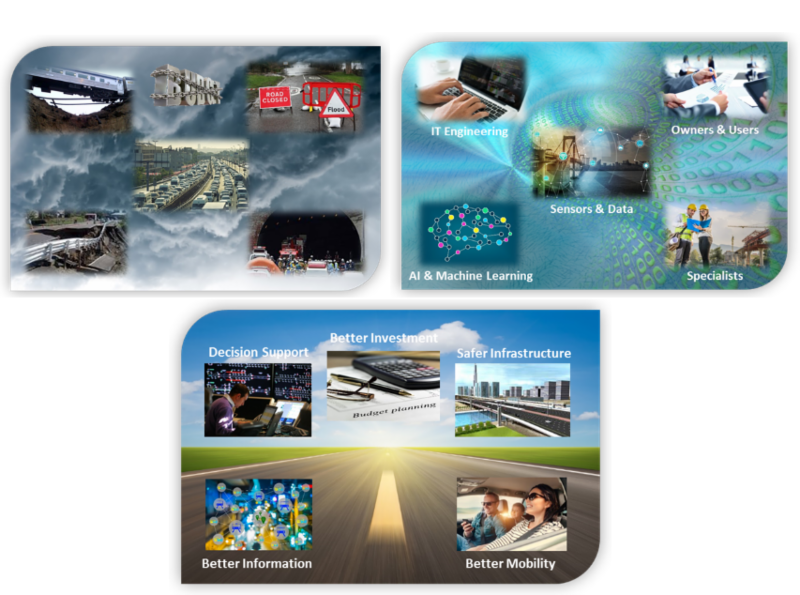SAFE-10-T to increase the safety of EU transport infrastructure across road, rail and inland waterway transport modes
The rapid development of information technology, including the widespread deployment of wireless sensor networks, is resulting in the ability for transport infrastructure objects to become smart and communicate their current condition. The proliferation of data provides a unique opportunity for infrastructure safety management to take a significant evolutionary step. By implementing data analytic techniques for transport infrastructure safety and traffic flow applications, the
SAFE-10-T project is designed to benefit from this significant opportunity.

Figure1: Project Consortium at kick-off meeting in Delft on 10th May 2017
The 36-month SAFE-10-T project, which started on 1st May 2017, aims
to enhance the safety of EU transport infrastructure implemented through an online, multi-modal, safety (decision support) tool.
SAFE-10-T falls under the H2020 topic of MG-3.4-2016 - Transport infrastructure innovation to increase the transport system safety at modal and intermodal level (including nodes and interchanges).
The SAFE-10-T project will develop a Safety Framework to ensure high safety performance while allowing
longer life-cycles for critical infrastructure across the road, rail and inland waterway modes. Moving from considering critical infrastructure such as bridges, tunnels and earthworks as inert objects to being intelligent (self-learning objects), the project will provide a means of reducing sudden failures. This will be achieved by:
- The Safety Framework will incorporate remote monitoring data stored in a BIM model that feeds into a decision support framework (DST) that enables decisions to be made automatically with maintenance prioritised for elements exhibiting stress.
- A major advance that will be achieved in the project is that the algorithms at an object level and at a network level will incorporate machine learning to train the system to evolve with time using available monitoring data.
- A trans-disciplinary approach with experts in Artificial Intelligence and Big Data Management working with infrastructure owners, engineers with expertise in risk and modelling and sociologists to make informed decisions.
- Major European infrastructure managers will undertake demonstration projects at critical interchanges and nodes of the TEN-T transport network.
The project will achieve significant impact in asset management by:
- Moving to intelligent objects that communicate their safety condition during extreme events and provide a means of reducing sudden catastrophic failure of infrastructure objects.
- Using Open Linked Data formats to manage all data and inputs from other sources. Mitigation actions can be taken and warnings of the increased risk level can be transmitted to other agencies and the public.
- Demonstrating the concept of fully interconnected transport networks on the TEN-T.
Overall approach and methodology
The SAFE-10-T project
will move from reactive management of infrastructure to proactive and safer management using advanced predictive tools and data analytics, as shown in Figure 2.

Figure 2: SAFE-10-T from reactive to proactive ensuring infrastructure safety
The project will be transformative for asset management in the transport sector, bringing together inter-disciplinary experts from the Artificial Intelligence (AI) and data management sectors with leaders in risk-based asset assessment of infrastructure and network modelling. The involvement of major infrastructure stakeholders in the project will allow the developed methodologies to be demonstrated for real-life case study scenarios.
The consortium to deliver the project involves research intensive SME's with expertise in asset management (33%), infrastructure managers (20%), industry associations and sociologists (7%), two research institutes, one focusing on AI and one on multi-modal transport (20%) and universities with expertise in Safety, BIM and visualisation of risk. Four technical Work Packages are created that will perform the following cutting-edge work streams:
- WP1 MAP
- WP2 FLOW
- WP3 SAFE
- WP4 DEMO
The SAFE-10-T kick-off meeting was held in Delft on 10th May 2017 (Figure 1 above).